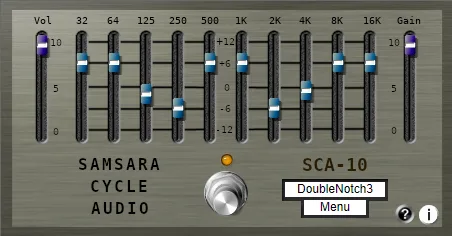Plugin Name: Dust Equalizer – Simplicity and Efficiency in Correlation
In the world of music production, where complexity is often mistaken for advantage, sometimes the greatest impact comes from tools that focus on simplicity and efficiency. This is the approach embodied by the Dust Equalizer plugin from developer Signaldust. Created with the “less is more” philosophy, this channel equalizer offers a refined set of tools for precise and musical sound correction, avoiding unnecessary distractions.
What is Dust Equalizer and why is it special?
Dust Equalizer is not just another equalizer. It is a tool designed to perform specific channel processing tasks with maximum sound quality and intuitiveness. It is equipped with a carefully selected set of filters and equalization bands, each of which has unique characteristics based on the desire to imitate the behavior of analog equipment.
Key Features and Architecture
The architecture of Dust Equalizer is designed to provide clean and musical sound. It includes:
- A pair of filters: Low-frequency and high-frequency filters have the standard Butterworth form. This choice provides the flattest amplitude-frequency response in the passband and a steep drop outside of it without significant ringing. This makes them ideal for cleanly removing unwanted sub-bass or high-frequency noise while maintaining the integrity of the useful signal.
- A pair of shelves: These shelves, low-frequency and high-frequency, have a unique asymmetric design. Their feature is a sharper “knee” closer to the mid-frequencies and a more gradual slope towards the extreme low or high frequencies. This shape allows for finer control over the energy of the corresponding frequency range, adding weight to the lows or “air” to the highs without the typical harshness of standard shelves.
- Two bell filters: These filters are designed to work in the mid-frequency range. They have a classic logarithmically symmetric shape that is familiar and predictable for most engineers. However, their key feature is the gain-bandwidth interaction. With a narrow bandwidth, the actual peak gain is higher, and it decreases with increasing bandwidth. This mimics the behavior of some classic analog equalizers and helps to maintain approximately the same perceived boost or attenuation regardless of the bandwidth, making corrections more musical and less harsh.
Analog Response and Accuracy
One of the main goals of Dust Equalizer is to get closer to the analog response. By applying an approximation method, each equalization band maintains its shape and characteristics extremely delicately, even at the highest audible frequencies. This ensures that your corrections will remain musical and natural, no matter how high in the frequency spectrum you work.
The “Less Is More” Philosophy in Practice
The “less is more” concept in Dust Equalizer means the absence of unnecessary features and a focus on high-quality performance of basic equalization tasks. This minimalist approach does not restrict, but on the contrary, frees the user, allowing them to quickly and effectively achieve the desired result, relying on the quality of the instrument itself, and not on a multitude of settings. This makes it an excellent choice for both experienced sound engineers and beginners.
Overall, Dust Equalizer from Signaldust is a valuable tool for any studio, offering the clarity, precision, and musicality of analog equipment in a convenient digital format. Its simplicity and efficiency make the equalization process pleasant and productive, helping your tracks sound exactly the way you want them to.



